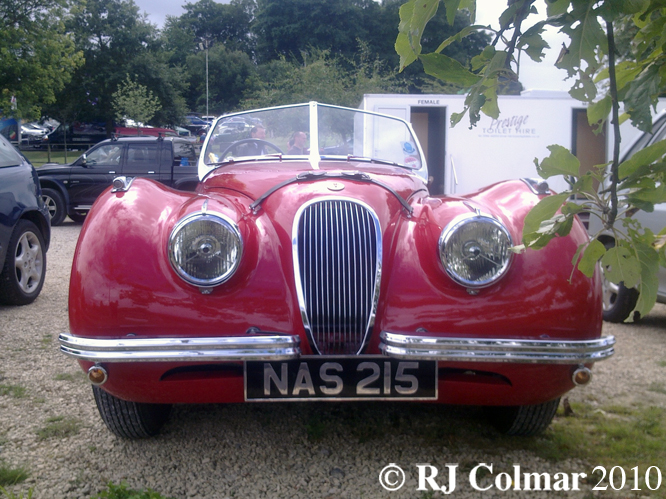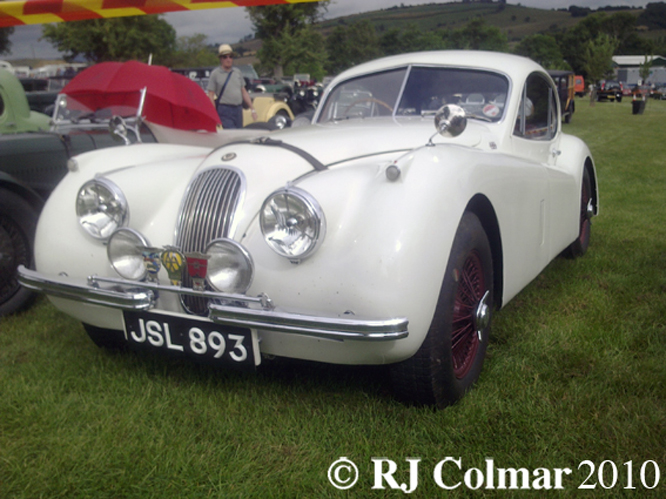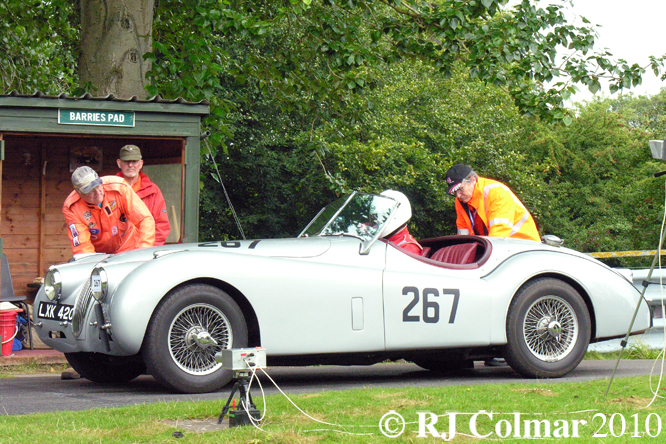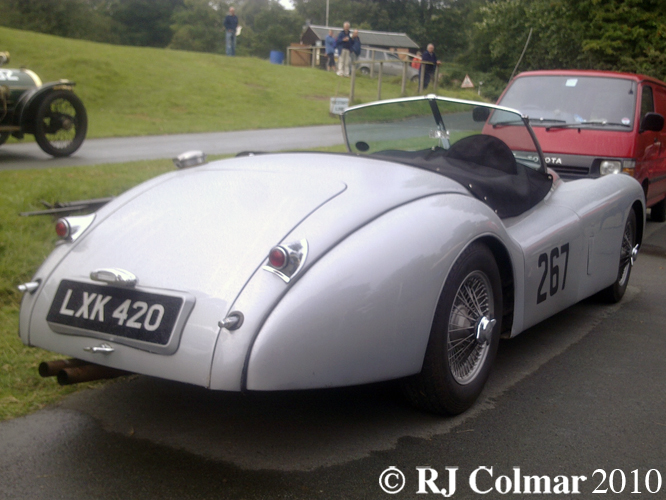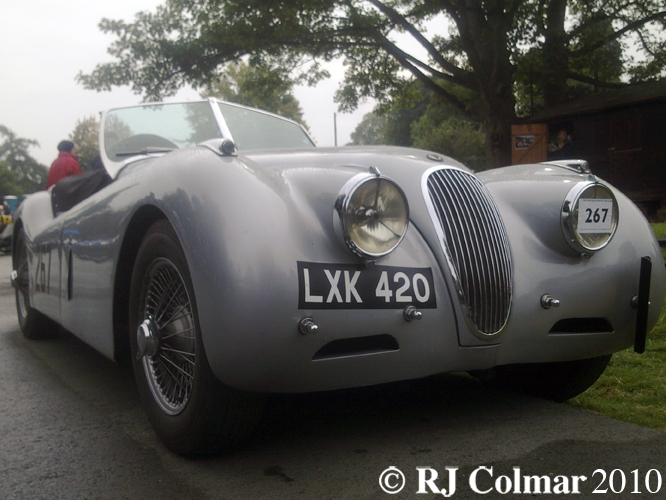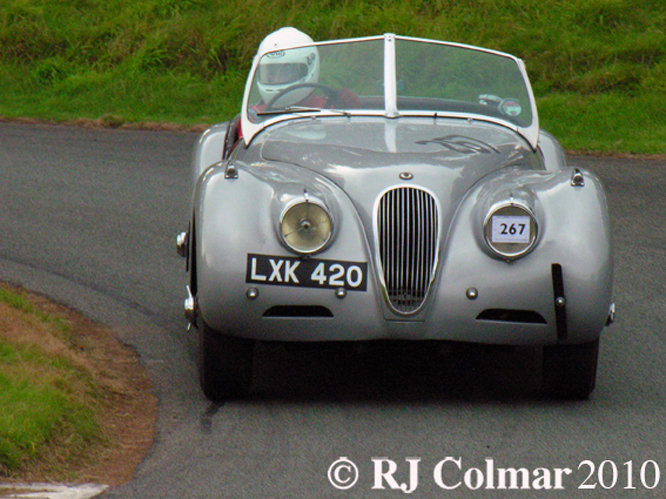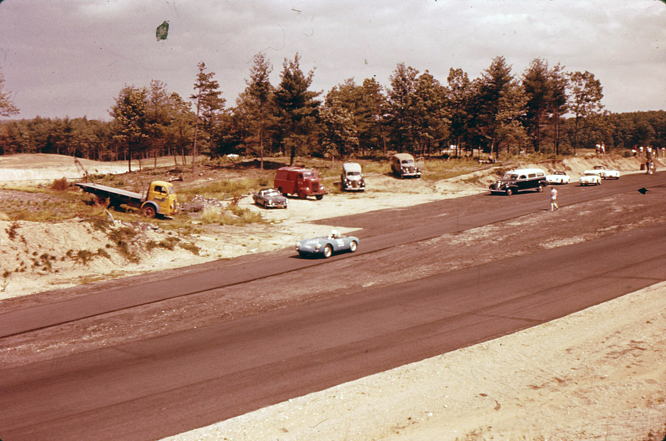In 1948 the British Government, desperately short of funds in the wake of the Second World War decided to increase the purchase tax on luxury vehicles costing more than £1,000 from 33.33% to 66.66% a move that was disastrous for small luxury vehicle manufactures like Healey.
However just as necessity is the mother of invention, Donald Healey saw the new tax as an opportunity to build a vehicle for less than £1,000 using the latest version of the chassis seen and Riley engines as used to built the Westland, Elliot, Sportsmobile and Duncan models.
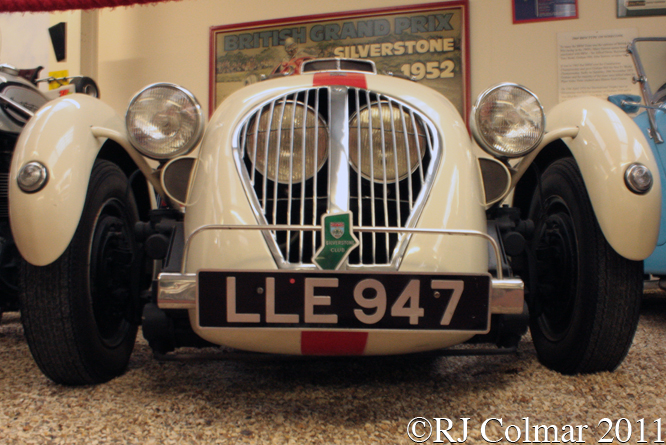
Len Hodges was responsible for the paired down body with head lights mounted behind the radiator grill and for which the spare tyre, mounted horizontally at the back of the car acted as a rear bumper.
Weighing only 2,100 pounds / 952 kgs the 104hp Silverstone’s power to weight ratio gave a rest to 60 mph time of 11 seconds and top speed of 110 mph.
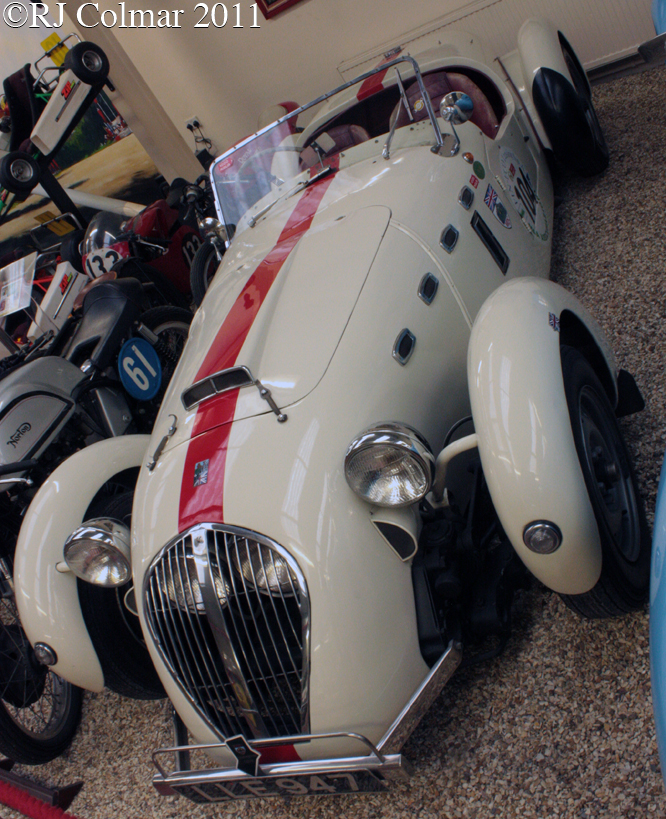
Notable early successes for the Silverstone in competition included Donald Healey with Ian Appleyard navigating, winning the 1949 Alpine Rally in a Silverstone as did Edgar Wadsworth and Cyril Corbishley in 1951 in the same year Peter Riley and Bill Lamb drove another Silverstone to victory in Liège-Rome-Liège Rally.
51 D Type Silverstones were built between 1949 and 1950 when an updated “E Type” Silverstone with a wider body was introduced.
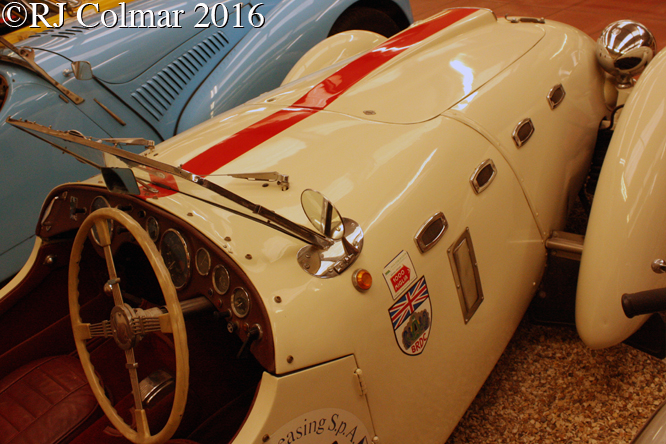
Today’s featured Healey Silverstone #D6 was owned by Carlo Castelbarco in 1950, Carlo with F Mosters at the wheel finished the 1950 Mille Miglia in 38th place.
In 1952 R Nabun drove #D6 on the Scottish Rally and according to the Healey Silverstone Register #D6 was the first car to be raced by Tony Lanfranchi, at Brands Hatch on Boxing Day 1957, who after narrowly avoiding becoming a full time Formula One driver in the 1960’s became a very well known championship winning club driver in the 1970’s and 1980’s who raced a diverse range of vehicles from a Muskovich to the famous National Organs Plymouth Barracuda.
Some of Tony’s exploits on the track and in the bar afterwards can be read in his eminently collectible biography “Down The Hatch”, written with Mark Kahn.
Before being acquired by the Haynes International Motor Museum, where the car is seen in these photographs, #D 6 belonged to Danish music producer Flemming Rasmussen, who collaborated with Rainbow, Metallica, Morbid Angel and Blind Guardian among many others, and the car still carries the same paint and decals as when Flemming drove the car on the 1987 retrospective Mille Miglia.
Thanks for joining me on this “Down The Hatch” edition of “Gettin’ a li’l psycho on tyres” I hope you will join me again for another visit to the Haynes International Motor Museum for Mercedes Monday tomorrow. Don’t forget to come back now !


